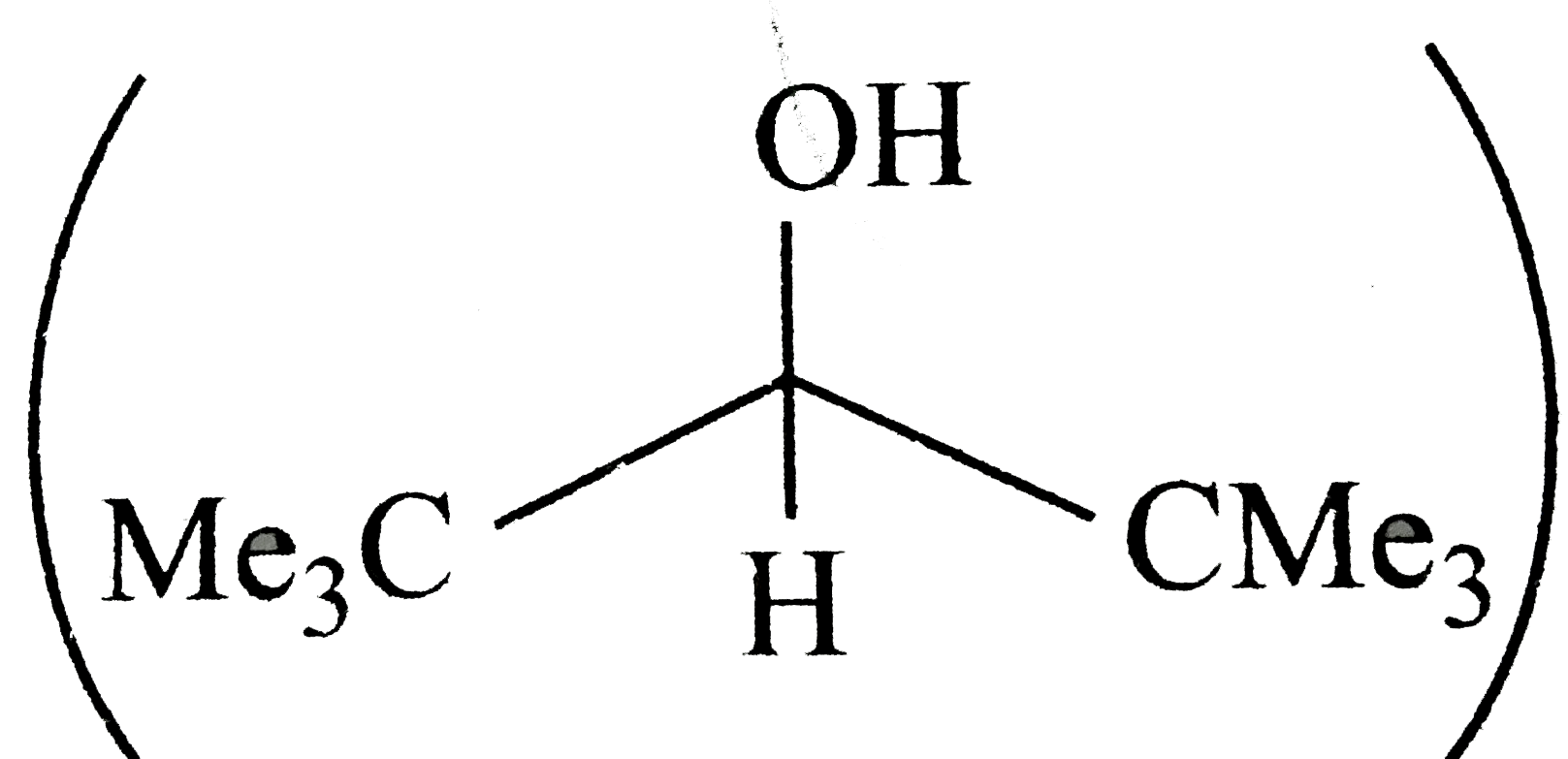Assertion. t-Butyl Methyl ether is not prepared by the reaction of t−butyl bromide with sodium methoxide.
Reason: Sodium methoxide is a strong nucleophile.
a. If both assertion and reason are true and reason is the correct explanation of assertion
b. If both assertion and reason are true but reason is not the correct explanation of assertion
c. If assertion is true but reason is false
d. If both assertion and reason are false
The correct Answer is:B
To solve the question regarding the assertion and reason about t-Butyl Methyl ether and sodium methoxide, we can break it down into clear steps:
1. Understanding the Assertion:
The assertion states that t-Butyl Methyl ether is not prepared by the reaction of t-butyl bromide with sodium methoxide.
2. Analyzing the Reactants:
- t-butyl bromide (C4H9Br) is a tertiary alkyl halide.
- Sodium methoxide (CH3O^-Na^+) is a strong base and a strong nucleophile.
3. Reaction Mechanism:
When t-butyl bromide reacts with sodium methoxide, one might expect an ether formation through nucleophilic substitution. However, because sodium methoxide is a strong base, it is more likely to act as a base rather than a nucleophile.
4. Base vs Nucleophile:
- Strong bases tend to abstract protons (H+) rather than participate in substitution reactions.
- In this case, sodium methoxide will abstract a proton from the t-butyl bromide, leading to the formation of an alkene through a beta elimination reaction (E2 mechanism).
5. Conclusion on Assertion:
Since the reaction leads to the formation of an alkene instead of an ether, the assertion is indeed true.
6. Understanding the Reason:
The reason states that sodium methoxide is a strong nucleophile. While this is true, it does not explain why t-Butyl Methyl ether is not formed in this reaction. The strong nucleophilicity of sodium methoxide is overshadowed by its strong basicity, which drives the elimination reaction instead.
7. Conclusion on Reason:
The reason is true, but it does not correctly explain the assertion. Therefore, while both the assertion and reason are true, the reason is not a correct explanation for the assertion.
Final Answer:
The correct option is that both the assertion and reason are true, but the reason is not the correct explanation for the assertion.
The assertion states that t-Butyl Methyl ether is not prepared by the reaction of t-butyl bromide with sodium methoxide.
- t-butyl bromide (C4H9Br) is a tertiary alkyl halide.
- Sodium methoxide (CH3O^-Na^+) is a strong base and a strong nucleophile.
When t-butyl bromide reacts with sodium methoxide, one might expect an ether formation through nucleophilic substitution. However, because sodium methoxide is a strong base, it is more likely to act as a base rather than a nucleophile.
- Strong bases tend to abstract protons (H+) rather than participate in substitution reactions.
- In this case, sodium methoxide will abstract a proton from the t-butyl bromide, leading to the formation of an alkene through a beta elimination reaction (E2 mechanism).
Since the reaction leads to the formation of an alkene instead of an ether, the assertion is indeed true.
The reason states that sodium methoxide is a strong nucleophile. While this is true, it does not explain why t-Butyl Methyl ether is not formed in this reaction. The strong nucleophilicity of sodium methoxide is overshadowed by its strong basicity, which drives the elimination reaction instead.
The reason is true, but it does not correctly explain the assertion. Therefore, while both the assertion and reason are true, the reason is not a correct explanation for the assertion.
The correct option is that both the assertion and reason are true, but the reason is not the correct explanation for the assertion.
Similar Questions
Reaction of t−butyl bromide with sodium methoxide produces
View SolutionThe reaction of t - butyl chloride and sodium ethoxide gives mainly
View SolutionGive the mechanism for the reaction of t-butyl bromide with aqueous potassium hydroxide.
View SolutionReaction of methyl bromide with aqueous sodium hydroxide involves
View SolutionWrite the reaction between tert-butyl-chloride and sodium ethoxide.
View SolutionA 2∘ alcohol
 can be obtained by the reaction of di-t-butyl ketone and
can be obtained by the reaction of di-t-butyl ketone and
View SolutionFormation of methyl tertiary butyl ether by the reaction of sodium tertiary butoxide and methyl bromide involves.
View SolutionWhich among the following is not true for the hydrolysis of t - butyl bromide with aqueous NaOH ?
View SolutionName the products obtained on treating a mixture of methyl bromide and ethyl bromide with sodium in presence of ether.
View SolutionThe compound which is not formed when a mixture of n-butyl bromide and ethyl bromide treated with sodium metal in the presence of dry ether is
View Solution